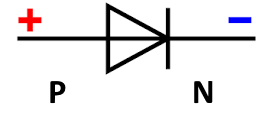







Search:
A diode is formed by connecting a P-semiconductor with an N-semiconductor :
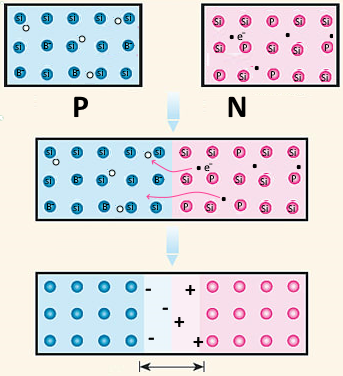 Even without an external voltage, some free electrons pass from the N-zone to "holes" in the P-zone.
This creates an area in which there are no more mobile charges (holes and electrons!) and which is therefore no longer conductive.
Even without an external voltage, some free electrons pass from the N-zone to "holes" in the P-zone.
This creates an area in which there are no more mobile charges (holes and electrons!) and which is therefore no longer conductive.
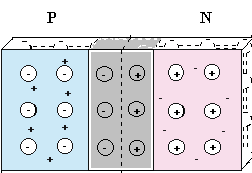 This zone expands when the mobile electrons are attracted by placing an external + pole on N and an external - pole on the holes: the diode becomes insulating.
This zone expands when the mobile electrons are attracted by placing an external + pole on N and an external - pole on the holes: the diode becomes insulating.
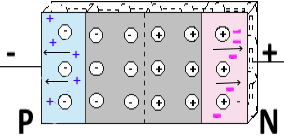 If, on the other hand, we apply a + pole to P and a - pole to N, the insulating zone disappears and the current can flow!
During this passage, the passage of electrons from the donor (e.g. phosphorus) through the silicon to the acceptor (e.g. boron) always takes place, but is only temporary as the holes are quickly filled by donor electrons and additional acceptor electrons are sucked away from + Pole.
If, on the other hand, we apply a + pole to P and a - pole to N, the insulating zone disappears and the current can flow!
During this passage, the passage of electrons from the donor (e.g. phosphorus) through the silicon to the acceptor (e.g. boron) always takes place, but is only temporary as the holes are quickly filled by donor electrons and additional acceptor electrons are sucked away from + Pole.
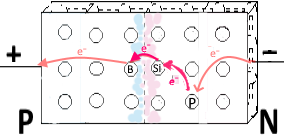 A diode therefore only conducts current in one direction, which is shown here schematically:
A diode therefore only conducts current in one direction, which is shown here schematically:
